Om Keshan
Keshan, Kashan If you follow the old caravan route from Tehran to Pakistan, you will find the town of Keshan about 260 km south of Tehran, on the edge of the great desert, Dascht-e-Kawir. Under the Safavides (1502-1722), the town of Keshan experienced a golden age in carpet history. It...Read more
Showing 1–30 of 39 results
-

Keshan Tæppe
tg04137a71cm x 85cmkr. 14.500,- -

Kashan Tæppe
CW3755983890cm x 78cmProduct from remote storageOnline
Priskr. 6.720kr. 5.040,- (-25%) -

Kashan Tæppe
CW72046487198cm x 126cmProduct from remote storageOnline
Priskr. 19.200kr. 14.400,- (-25%) -

Kashan Tæppe
CW83456788196cm x 130cmProduct from remote storageOnline
Priskr. 180.000kr. 135.000,- (-25%) -

Keshan Tæppe
tt0119200cm x 128cmTilbudSale! kr. 8.050,- (-30%) -

Kashan Tæppe
CW81990175200cm x 128cmProduct from remote storageOnline
Priskr. 48.000kr. 36.000,- (-25%) -
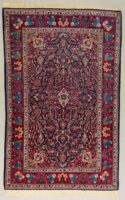
Keshan Tæppe
bbm14203cm x 128cmTilbudSale! kr. 24.000,- (-25%) -

Kashan Tæppe
tg01041205cm x 130cmTilbudSale! kr. 25.200,- (-30%) -

Keshan Tæppe
tg05231206cm x 130cmkr. 60.000,- -

Kashan Tæppe
CW61952174206cm x 130cmProduct from remote storageOnline
Priskr. 36.000kr. 27.000,- (-25%) -

Kashan Tæppe
CW48890018214cm x 126cmProduct from remote storageOnline
Priskr. 10.800kr. 8.100,- (-25%) -

Kaschan Tæppe
tg01042206cm x 132cmTilbudSale! kr. 23.800,- (-30%) -

Keshan Tæppe
bbm54206cm x 133cmkr. 79.000,- -
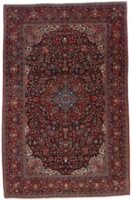
Kashan Tæppe
CW58157480208cm x 134cmProduct from remote storageOnline
Priskr. 30.000kr. 22.500,- (-25%) -
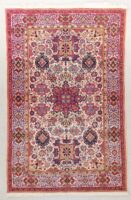
Keshan tæppe
tk250207cm x 137cmkr. 38.000,- -

Kashan Tæppe
CW85890173209cm x 137cmProduct from remote storageOnline
Priskr. 48.000kr. 36.000,- (-25%) -

Kaschan Tæppe
9802216cm x 140cmkr. 24.000,- -

Kashan Tæppe
CW61890128220cm x 140cmProduct from remote storageOnline
Priskr. 15.600kr. 11.700,- (-25%) -
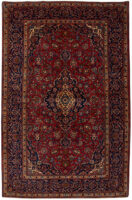
Kaschan Tæppe
bbm9228cm x 142cmkr. 29.000,- -

Kashan Tæppe
CW42451929233cm x 140cmProduct from remote storageOnline
Priskr. 21.600kr. 16.200,- (-25%) -

Ardekan Keshan Tæppe
tg07679308cm x 201cmkr. 14.900,- -

Kashan Tæppe
CW62990204320cm x 214cmProduct from remote storageOnline
Priskr. 480.000kr. 360.000,- (-25%) -

Kashan Tæppe
CW109495400332cm x 207cmProduct from remote storageOnline
Priskr. 28.800kr. 21.600,- (-25%) -

Kashan Tæppe
CW24190149335cm x 220cmProduct from remote storageOnline
Priskr. 76.800kr. 57.600,- (-25%) -

Kashan Tæppe
CW74860112352cm x 230cmProduct from remote storageOnline
Priskr. 32.400kr. 24.300,- (-25%) -
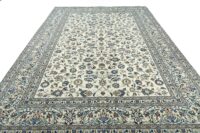
Ardekan Keschan Tæppe
tg08250356cm x 244cmkr. 18.900,- -

Kashan Tæppe
CW369593830364cm x 258cmProduct from remote storageOnline
Priskr. 192.000kr. 144.000,- (-25%) -

Kashan Tæppe
CW22390200355cm x 265cmProduct from remote storageOnline
Priskr. 144.000kr. 108.000,- (-25%) -
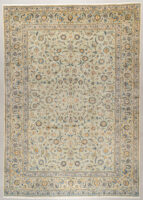
Keshan Tæppe
tg05333402cm x 284cmTilbudSale! kr. 29.400,- (-30%) -
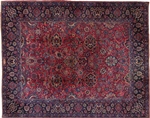
Kashan Tæppe
CW99755753380cm x 301cmProduct from remote storageOnline
Priskr. 240.000kr. 180.000,- (-25%)
Showing 1–30 of 39 results
Mere om Keshan
Keshan, Kashan
If you follow the old caravan route from Tehran to Pakistan, you will find the town of Keshan about 260 km south of Tehran, on the edge of the great desert, Dascht-e-Kawir. Under the Safavides (1502-1722), the town of Keshan experienced a golden age in carpet history. It was here that they first used natural silk in carpet production, and you can see it used in such famous carpets as the Ardebil carpet in London and the Viennese hunting carpet in Vienna. During the Afghan invasion of 1722, carpet production was interrupted, and it did not resume until the end of the 1800s. There are some beautiful carpets from that period, knotted by master knotter Mohtesham. These carpets are known as Keshan Mohtesham, and today, they can be found in museums and private collections all over the world. They have become a very popular but also very expensive collectors’ item. The Mohtesham period lasted about 30 years. Carpets with historic motifs, e.g. a famous shah out hunting, are common in the old Keshan carpets. Column-Keshan is a carpet with Mirab (prayer alcove) and vase motifs with flowers or a medallion with a picture of a mosque or a beautiful Persian house. Mirror-Keshan is a carpet with a central medallion and appendages (drops) on a unicoloured base. The ground colour is usually red or blue. The most common Keshan pattern is a central medallion on a blue, red or beige ground colour and with corner motifs. The base is usually full of leaf vines and flowers. Many are signed by the knotter or the pattern designer, or you might see the name of the workshop in the signature. Full motifs may also be knotted in pure silk, for example all the flowers. Keshan carpets in pure silk are still being made, but they are rarely on the market. Beautiful carpets are still being made in Keshan today, and they have retained their traditional old patterns through hard work and incredible precision. The carpets are knotted with Senneh knots on a cotton warp, and the pile consists of good quality wool. The knot density is 23,000-74,000 per ft2. Far fewer carpets are being knotted in Keshan compared to previously. On the other hand, carpets with Keshan patterns are being knotted in many other parts of Iran. These are typically carpets that are quite different and of lower quality that what is expected of an original Keshan carpet.
Natanz, Natans Arun, Aron Ardakan, Ardekan Carpet names such as Natans, Aron and Adakan often appear on the market. Their patterns are dead ringers for Keshan carpets, but there are big differences since the materials and the knotting are of far poorer quality. These carpets are also on the cheap side. The knot density is usually 9,000 – 23,000 knots per ft2. It is the carpet merchant’s responsibility to be honest and knowledgeable concerning his products, ensuring that the carpet is named correctly on the price tag with names like Natans-Keshan, Aron-Keshan and Ardakan-Keshan. Carpets with Keshan patterns are also knotted in Nadjafabad and even in Mashad.
Source:
You are reading an extract from the book ‘Oriental Carpets, Knottet with Love’ by Martin Munkholm.
This extensive book about all that is carpets can be borrowed in Danish libraries or be bought following this link: https://belle-rugs.dk/se-taepper/bog-aegte-taepper-knyttet-med-kaerlighed/
The book is published by Muusmann Forlag.
For more info: http://muusmann-forlag.dk/
You can find our selection of Keshan carpets underneath.
